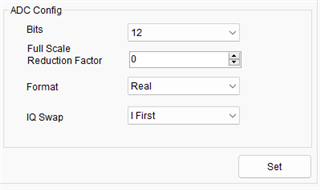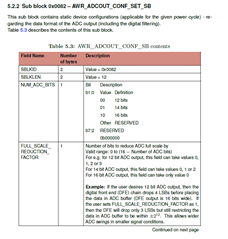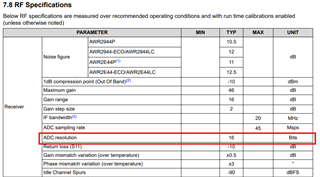Other Parts Discussed in Thread: AWR2544
Tool/software:
Hi,
I’m using mmWave Studio to connect the EVM to the DCA and save data to my computer over Ethernet.
On the DCA, I see options for 12/14/16-bit data output. I need to stream 12-bit data, but so far I’ve only been successful with 16-bit.
Is it possible to stream 12-bit data? Am I missing something in the mmWave Studio configuration?
Thanks,
Shlomi




